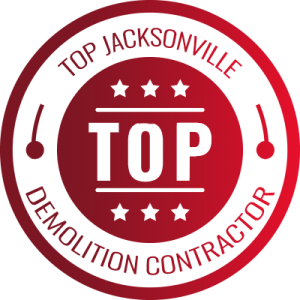



Lead-based paint might seem like a thing of the past, but many commercial buildings throughout Northeast Florida, especially those built before the late 1970s, still carry this hidden hazard. It’s something property managers and business owners don’t always think about until a renovation or demolition is in the works. That’s usually when the issue comes to light, forcing teams to make fast decisions while balancing safety, legal requirements, and project planning.
If you’ve found or suspect lead paint in your commercial property, you’re not alone. For buildings that have stood for several decades, it’s not out of the ordinary. What matters most is knowing how to respond. This issue isn’t just about compliance. It’s also about protecting workers, tenants, and the public from exposure. Getting a handle on lead paint now can go a long way toward avoiding bigger problems later.
Understanding the Hazards of Lead Paint in Commercial Buildings
Lead paint isn’t something you want to leave untouched once it’s been identified. When the paint starts to chip, peel, or get disturbed through construction or demolition, lead particles can spread into the air or dust. That’s when it becomes a health risk—not just for workers, but for anyone entering the space regularly.
In older commercial buildings in Northeast Florida, lead paint was commonly used because of its durability and moisture resistance. While those benefits made sense at the time, they don’t outweigh the risks today. Property owners responsible for these buildings can’t afford to ignore the potential danger. It’s especially relevant when planning a demolition or even a large-scale renovation. Handling the issue early can help prevent delays, shutdowns, or fines.
One example we’ve seen is a downtown office building scheduled for major remodeling. Pre-construction testing revealed layers of lead paint beneath newer coats. Because the owners had a proactive plan, they were able to bring in the right help and keep the project on track without risking health or safety.
If your property is more than a few decades old, it’s smart to treat the situation cautiously and assume lead paint might be present until proven otherwise.
Identifying Lead Paint in Your Building
You might not always be able to spot lead paint just by looking at it. That’s what makes testing so important. But there are a few warning signs that should get your attention:
– Peeling or cracking paint, especially around windows, doors, and trim
– Dust that settles near walls or baseboards when surfaces are disturbed
– Thick, layered paint that looks like it’s covering older coatings
– A history of past renovations without notes on lead paint removal
If any of these apply to your building, it’s time to get a professional inspection. The most reliable methods include:
1. Paint chip sampling – Small samples are collected and sent to a lab for analysis
2. X-ray fluorescence (XRF) – A device is used on-site to scan and detect levels of lead within the paint
3. Risk assessment services – These combine lead paint testing with a basic overview of possible hazards within the property
Working with professionals helps ensure the job is done safely and accurately. Trying to scrape or sand suspicious areas without proper tools or protection can make things worse. For commercial spaces in Northeast Florida, scheduling a test before starting any kind of demolition or renovation is the best move. It keeps your timeline intact while helping avoid unsafe working conditions.
Immediate Actions to Take Upon Discovery
If your commercial property in Northeast Florida tests positive for lead paint, don’t panic. What matters is acting quickly and responsibly. The first thing to do is make sure that nobody disturbs the area. Peeling or flaking paint can release harmful particles into the air, especially during renovation or demolition tasks. Control access to the affected parts of the building and mark those spaces clearly.
Next, notify anyone who needs to know. This might include building staff, tenants, project managers, or maintenance crews. Clear communication at this stage prevents unintentional contact and helps keep everyone safe. Even something as small as drilling into a wall can stir up lead dust.
Along with containment, commercial buildings in Northeast Florida also have to follow state and federal environmental rules. That usually means working with certified professionals to build a cleanup or demolition plan that meets all safety standards. Skipping these steps can delay projects or even shut them down.
Here’s a short breakdown of what you should do after confirmation:
– Restrict access to any areas with exposed or damaged lead paint
– Post warning signage where needed
– Stop any ongoing construction or demolition near the affected sections
– Schedule a consultation with licensed professionals to map the next steps
– Review federal rules from the EPA and OSHA that apply to commercial lead exposure
These actions might feel like a pause button on your plans, but they’ll set you up for a smoother and safer process going forward.
Professional Remediation and Demolition Services
Removing lead paint is not a simple scrub-and-go job. Because of the health risks involved, any handling of lead materials needs to be done by trained professionals with proper equipment. For commercial demolition in Northeast Florida, this often means working with a demolition contractor who knows how to manage lead-safe practices.
There are a few different methods used during remediation, depending on the state of the paint and the structure around it. Those include:
1. Encapsulation – A special coating is applied over the lead paint to seal it and prevent exposure
2. Enclosure – Covering the lead-painted surface with a new, durable material like drywall or paneling
3. Removal – Stripping or scraping the paint away using industrial tools under ventilated, sealed conditions
4. Demolition with hazardous material handling – Tearing down whole sections or structures with special disposal procedures
Choosing the right approach depends on how extensive the contamination is, what kind of work is planned for the space, and how quickly you need it done. In some cases, it’s more cost-effective and safer to demo entire sections than it is to remove layer after layer of lead paint.
For property owners in Northeast Florida planning major commercial renovations or demolition, having experts handle the lead paint removal or containment allows your project to move forward without needless risk or delay.
Ensuring a Safe Future for Your Property
Dealing with lead paint isn’t a one-time fix. If your commercial building had any level of exposure, then keeping it safe means keeping up with regular checks and smart maintenance. You’ll want to look over high-traffic areas or spots where the building shifts over time—around doors, vents, ceiling joints, and floors. Those are the places where even sealed paint might start to crack or wear out.
Setting up a recurring inspection schedule with professionals helps catch any new problems early. If your building went through partial remediation or demolition, it’s a good idea to double-check that the remaining materials haven’t been affected during construction.
Some general ways to keep the space safe moving forward are:
– Keep detailed records of any lead-related work done on the property
– Conduct safety reviews before starting any new renovations
– Train internal maintenance teams to watch for signs of lead paint damage
– Stay updated on changes in local rules or federal safety standards
A safe building reduces your liability and gives your tenants and staff peace of mind. Taking these small steps now can make a big difference over time.
Planning Your Next Steps with Confidence
Lead paint in your commercial building doesn’t mean everything has to stop or go off track. With the right support and information, this hurdle can be managed like any other part of your project. The key is partnering with people who understand the risks, the legal steps, and the work it takes to do things the right way.
Tackling this issue also helps protect the long-term value of your property. Building owners in Northeast Florida who commit to safe building practices are more likely to avoid fines, delays, and complaints. And they’re also better set up for future upgrades, tenant turnover, or resale.
Whether you’re about to break ground on a new project, gut an outdated structure, or repurpose a commercial site, making a plan for any lead paint you come across keeps your timeline solid and your entire team protected. Lead paint isn’t a dealbreaker. It’s just one more factor to account for as you move ahead.
Facing lead paint issues in your commercial building? It’s important to get the right guidance and support. Our team at Elev8 Demolition is here to help. We navigate complex challenges, ensuring the safety and integrity of your projects. Discover how we can assist with commercial demolition in Northeast Florida and ensure a smooth and efficient process. Let’s work together to prioritize safety and set your project on the path to success.

